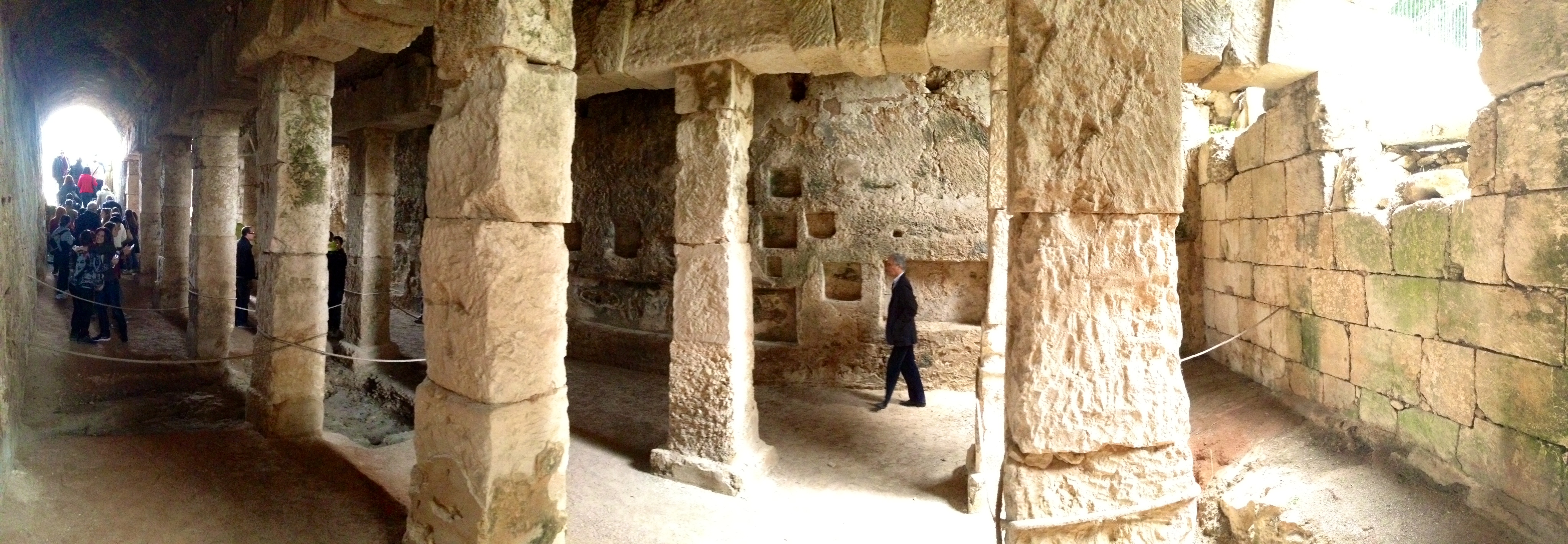Roman Pool
The Roman Pool is located in the entrance area of the Neapolis Archaeological Park.
It extends from north to south and presents a rectangular area, 20 meters long, 7 meters wide and about 5 meters deep.
The larger walls are made from living rock, being located in an area of latomia, while the smaller ones are formed by large ashlars (a block of squared stone used for construction).
The procedures and techniques used to cut the walls seem to be those of Latomie.
he environment is divided into 3 naves, by a double row of pillars on which rest platform architraves surmounted by barrel vaults.
The walls feature votive niches and recesses dug into the stone, with the same varied and irregular pattern present in some rock walls of the ancient road that led to the quarry where the Amphitheatre was built.
The pillars rest on square bases and are formed by large blocks bound by cement grout.
The term “pool” derives from the function for which it was intended, since it served as a water tank for naval battles that took place inside the Roman Amphitheater that was later emptied by running water using the natural slope of the ground.
The Roman Pool received water through a 1.5 km long conduit from a spring that flowed from the current Viale Scala Greca (current north entrance to Syracuse).
In the walls there are two holes, one of which was connected with an aqueduct behind that ended in the Amphitheatre.
During the Norman domination (Viking people of Scandinavian origin) a church dedicated to chiesa dedicata a S. Nicolò.

The definitive cessation of use of the Roman Pool, it seems to have happened with the Arab domination (878 A.D. – 1086 A.D.).
The basilical structure highlighted by the distinction of the aisles and the presence of pillars, dates back to the Byzantine period.
The lintel (horizontal architectural structure supported by columns) was a useful replacement for the arch, which would have caused an elevation of the basilica beyond street level.
The Roman Pool, therefore, has traces of Greek, Hellenistic-Roman and medieval origins.
We can still admire it today, although without its ancient functionalities.
OPENING HOURS AND PRICES
Location: Viale Paradiso – Parco Archeologico della Neapolis
Contacts.: +39 0931 489511
Archaeological site without architectural barriers
First Sunday of each month free entry.
Entry ticket to the Archaeological Park: Adults € 10.00 – Reduced € 5.00 (under 18) – Free entrance up to the age of 12.
Combined ticket for the Archaeological Park + a museum of your choice between the Paolo Orsi Museum or the Palazzo Bellomo Gallery – Ticket price: € 13.50 – Reduced € 7.00 (under 18) – Free admission until the age of 12
Opening hours of the ticket office: from 8.30 p.m. to 6.00 p.m.
PARKING OPENING HOURS: from 8.30 a.m. to 6.30 p.m.
From May 10 to July 18 the hours may vary, on the occasion of the tragedie greche that will be performed at the Greek theater.


